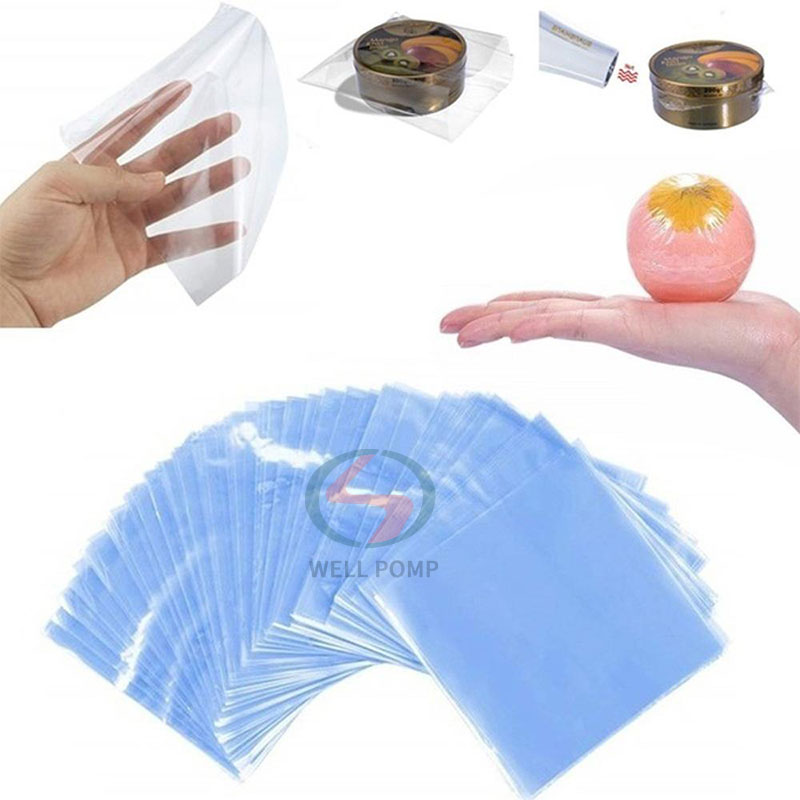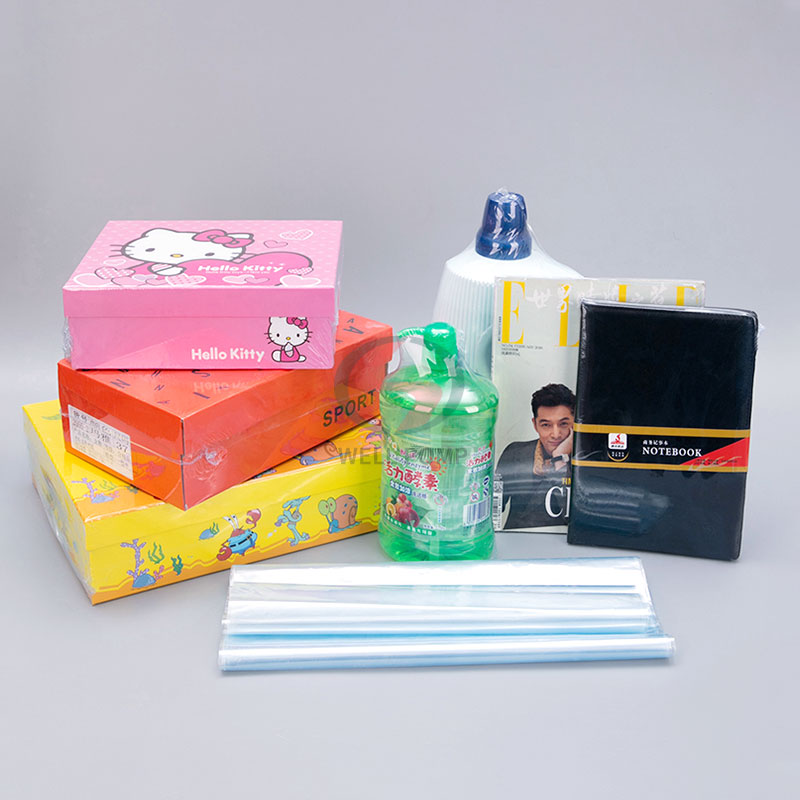
Brief introduction of heat shrinkable film's applicability and performance advantages.
2024-05-22 15:30Heat shrinkable film mainly adopts the principle of stretching orientation of high-fetching molecular chains. Its physical principle is to stretch the ionomer when it is in a high elastic state. When the polymer is quenched below the glass transition temperature, the molecular orientation is frozen. At this time, when the article is packaged, due to the relaxation of molecular motion stress, the molecule will return to its original state and shrink. At present, there are PE shrink film, PVC shrink film, PP shrink film, POF co-extrusion shrink film and so on in heat shrinkable film. In the big family of heat shrinkable packaging film, POF three-layer co-extrusion heat shrinkable film is a new generation product that has gradually emerged and been accepted by people in recent years.

With the development of economy, commodities in all occupations are inseparable from packaging. The development of packaging machinery is an important pillar of the national economy. Packaging machinery is developed with the presentation of new packaging materials and the development of packaging skills. Since the creation of papermaking technology in China, the packaging of related commodities has taken shape. The development of packaging machinery has brought traditional craft packaging to a new situation, and the mechanized packaging is faster and more accurate. Together with the presentation of this equipment, the commodity economy has also been greatly promoted.
Heat shrinkable film is suitable for the packaging needs of products from all walks of life. It can be used for single-piece or small-set packaging, as well as large-scale pallet packaging, and can be used for heat-shrinkable packaging of stationery, toys, textiles, paper products, beverages, medicines, tongue-and-groove floors, hardware and electrical appliances, etc. PVC heat shrinkable film is made of PVC resin by ethylene method mixed with more than a dozen auxiliary materials and inflated twice. Its characteristics are good transparency, easy shrinkage, freely adjustable shrinkage rate according to users' needs and strong operability. PVC heat shrinkable film has good transparency and high shrinkage, ranging from 40% to 60%, and its cost is low, tensile strength is large, temperature shrinkage range is large, and the requirements for heat sources are not high. The main processing heat sources are hot air, infrared rays or their combination.
Heat shrinkable film's widely used performance advantages:
1. The materials used in heat shrinkable film are all green packaging materials that are rarely certified by the United States.
2. The shrinkage rate is high: the shrinkage rate in heat shrinkable film is as high as 75%, which is suitable for the collective packaging of multiple articles and convenient for transportation. And can meet the requirements of different commodities for contractility.
3. Strong cold resistance: its physical properties will not change even at MINUS 50 degrees Celsius, so it is suitable for packaging and transportation of frozen food.
4, good flexibility: to avoid the impact of external force on the packaged goods, and to protect the packaged goods.
5, low packaging cost, good quality.
PVC material is toxic, so it can't be used to package food directly! Because of its high chemical invariance, it can be used to manufacture pipelines, pipe fittings, oil pipelines, centrifugal pumps and blowers. Polyvinyl chloride (PVC) hard board is widely used in chemical industry to make linings of various storage tanks, corrugated boards of buildings, door and window structures, wall decorations and other building materials. Because of its excellent electrical insulation function, it can be used to manufacture plugs, sockets, switches and cables in the electrical and electronic industries. In daily life, PVC is used to make sandals, raincoats, toys and artificial leather. Polyvinyl chloride is vinyl chloride composed of acetylene gas and hydrogen chloride, and then polymerized. It has high mechanical strength and good corrosion resistance. It can be used to manufacture waste gas discharge towers and gas and liquid delivery pipes in chemical industry, textile industry and other industries, and can also replace other corrosion-resistant materials to manufacture storage tanks, centrifugal pumps, ventilators and joint numbers.
Heat shrinkable film adheres to the road of sustainable development and actively advocates energy conservation and emission reduction and low-carbon life, which is an important strategy for severe pollution in China. Nowadays, low-carbon life has become a household word, and the concept of energy conservation and emission reduction has penetrated into the development of all walks of life in China. For example, in China's packaging industry, green packaging has swept the entire packaging market, and the environmentally-friendly packaging film represented by POF heat shrinkable film has set off a wave of green packaging, which will be combined with packaging concepts. POF heat shrinkable film not only embodies the modern packaging concept, but also fully embodies its characteristics, which is in line with the mainstream of the development of energy-saving society and has the development significance of the times.
The extensive use of POF heat shrinkable film in China packaging market fully reflects China's attention to environmental protection, and also reflects the improvement of modern people's environmental awareness and overall quality. POF heat shrinkable film is a plastic packaging film that combines functionality and environmental protection, with the advantages of sealing, high transparency and gloss, strong tear resistance and excellent cold resistance. The outstanding environmental performance is its incomparable advantage. POF heat shrinkable film is widely used in food and beverage, frozen food and cold resistance.

Three-layer co-extruded heat shrinkable packaging film is made of linear low density polyethylene (LLDPE) and polypropylene copolymer (TPP, PPC) as main raw materials, and added with necessary additives. Its process is different from the traditional blow molding process. Due to the poor tensile properties of PP in molten state, the traditional blow molding process cannot be adopted, but the double film bubble process, also known as Prandi process in the world, is adopted. It is to melt and extrude raw materials through different extruders, and through special design.
